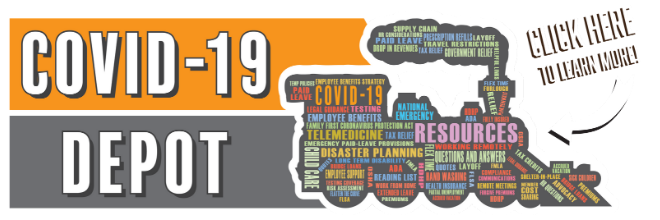The CARES Act Paycheck Protection Program
In response to the spread of the 2019 Novel Coronavirus (COVID-19), President Trump signed the Coronavirus Aid, Relief, and Economic Security Act (CARES Act) into law on March 27, 2020. The CARES Act is the third phase in Congress’ response to COVID-19 following the Coronavirus Preparedness and Response Supplemental Appropriations Act, 2020 and the Families First Coronavirus Response Act (FFCRA). In addition to providing emergency relief aimed at individuals and hospitals, the roughly $2 trillion CARES Act provides emergency relief to small businesses. This Advisor focuses on the Paycheck Protection Program administered by the Small Business Administration (SBA) and the Department of the Treasury (Treasury), which will undoubtedly be instrumental in ensuring the survival of small businesses during the COVID-19 crisis.
On June 5, 2020, the Paycheck Protection Program was amended by the Paycheck Protection Program Flexibility Act of 2020.
Paycheck Protection Program
The Paycheck Protection Program (the PPP) was established under the CARES Act in order to provide small employers with an incentive to keep workers on their payroll during the COVID-19 crisis. Under the PPP, which is an extension of the SBA Section 7(a) loan program, qualifying small businesses are eligible to borrow up to $10 million, in order to maintain their workforce during the covered period for the loan. All or a portion of the loan may be forgiven if the borrower follows the SBA guidelines. The Treasury has issued FAQs and the application form on its website. Information on the program is also available on the SBA website.
Eligibility
In order to qualify for a loan, the business must have 500 or fewer employees (full-time, part-time, or other basis) or if higher, the maximum number specified for the type of business in the SBA’s table of small business size standards. Accommodation and food service businesses that have 500 or fewer employees for each business location are eligible for a loan. Eligibility extends to non-profits, veterans organizations, tribal concerns, sole proprietorships, self-employed individuals, and independent contractors. In order to qualify, the business must have been in operation on or before February 15, 2020, and must have paid salaries and payroll taxes or paid independent contractors as documented by the
issuance of Forms 1099. The guidance indicates that an individual with self-employment income is eligible to apply.
- Starting April 3, 2020, small businesses and sole proprietorships can apply for and receive loans.
- Starting April 10, 2020, independent contractors and self-employed individuals can apply for and receive loans.
- Application Deadline: Originally June 30, 2020, extended to December 31, 2020, under the PPPFA (however, the SBA subsequently announced that it will not accept applications after June 30, 2020. On July 4, 2020, the President signed a law extending the application deadline allowing businesses to apply for the loan until August 8, 2020).
Loan Amount
Eligible employers may borrow an amount equal to the employer’s average monthly payroll cost, determined based upon the costs incurred during the one-year period prior to the date the loan was made, and then multiplied by 2.5. The loan is therefore the employer’s monthly average payroll multiplied by 2.5. For example, if the employer’s monthly payroll is $300,000 for the preceding 12-month period, the average monthly payroll expense would be $25,000 ($300,000/12). Multiplying the average monthly payroll by 2.5 equals $62,500, which is the maximum loan amount. When determining the average monthly payroll, salaries in excess of $100,000 cannot be included.
Loan Forgiveness
The SBA has indicated that the PPP loan may be forgiven if the loan is used to cover the following permissible expenses over the “covered period” beginning on the origination date of the loan, and ending on the earlier of 24 weeks or December 31, 2020 (if an employer received a covered loan before June 5, 2020, the employer may elect for the covered period to end eight weeks after the origination date of the loan), and employee retention and compensation levels are maintained:
- Payroll costs (as defined below), including benefits
- Interest on mortgage obligations incurred before February 15, 2020
- Rent under lease agreements in force before February 15, 2020
- Utilities, for which service began before February 15, 2020
Permissible payroll costs include:
- Salaries, wages, commissions, or tips (capped at $100,000 on an annualized basis per employee)
- Employee benefits including costs for vacation, parental, family, medical or sick leave, allowance for separation or dismissal; payments required for the provision of group health care benefits including insurance premiums; and payment for retirement benefits
- State and local taxes assessed on compensation
- For a sole proprietor or independent contractor, wages, commissions, income or net earnings from self-employment, capped at $100,000, on an annualized basis for each employee
Excluded from payroll costs are:
- Payroll taxes (Social Security and Medicare), railroad retirement taxes, and income taxes
- Any compensation of an employee whose principal place of residence is outside of the United States
- Qualified sick leave wages while an employee is taking emergency paid sick leave for which a credit is allowed under section 7001 of the Families First Coronavirus Response Act (Public Law 116–5 127)
- Qualified family leave wages while an employee is taking emergency FMLA leave for which a credit is allowed under section 7003 of the Families First Coronavirus Response Act
In order to receive loan forgiveness, an employer must use at least 60 percent of the covered loan amount for payroll costs, and may use up to 40 percent of such amount for any payment of interest on any covered mortgage obligation (which shall not include any prepayment or payment of principal on a covered mortgage obligation), any payment on any covered rent obligation, or any covered utility payment.
The amount of loan forgiveness will be reduced if the average number of full-time equivalent employees working during the loan covered period is less than the average number of full-time equivalent employees prior to origination. This is measured over the 24-week period, or until December 31, 2020, whichever is earlier (or eight-week period for eligible employers), after the loan origination. At the employer’s option, the number of employees before the loan origination can be the average number of employees between February 15, 2019, and June 30, 2019, or the period between January 1, 2020, and ending February 29, 2020. The amount of loan forgiveness will also be reduced by the amount of any reduction in total salary or wages of any employee during the covered period that is in excess of 25 percent of the total salary or wages of the employee during the most recent full quarter in which the employee was employed before the covered period (employees that received more than $100,000 annually for 2019 are excluded).
In the event you have laid off employees or reduced employee salaries during the crisis, you have until December 31, 2020, to restore your full-time employment and salary levels for any changes made between February 15, 2020, and April 26, 2020.
Employers are encouraged to maintain their employment and salary levels to avoid jeopardizing loan forgiveness. However, the PPPFA provides that an employer will not have their loan forgiveness amount reduced under the following circumstances. During the period from February 15, 2020, and ending on December 31, 2020, the loan forgiveness amount will not be reduced because of a reduction in the number of full-time equivalent employees, as noted above, if the employer is able to document in good faith: 1) an inability to rehire individuals who were employees of the eligible recipient on February 15, 2020 and an inability to hire similarly qualified employees for unfilled positions on or before December 31, 2020; or 2) an inability to return to the same level of business activity as such business was operating at before February 15, 2020, due to compliance with requirements established or guidance issued by the Secretary of Health and Human Services, the Director of the Centers for Disease Control and Prevention, or the Occupational Safety and Health Administration during the period beginning on March 1, 2020, and ending December 31, 2020, related to the maintenance of standards for sanitation, social distancing, or any other worker or customer safety requirement related to COVID–19.
Loan Payments (If not forgiven)
If the loan is not forgiven, payments are deferred for six months from the loan origination date at a fixed interest rate of 1%. The borrower can request a repayment term of up to two years. No prepayment penalties or fees apply.
No personal Guarantee
No personal guarantee or collateral is required as a condition of the loan and all loan fees are waived. However, the U.S. government will pursue criminal charges against the borrower if the loan proceeds are used for fraudulent purposes. There is no requirement that the employer first make an effort to obtain a loan from another source.
Application Procedure
The PPP application is to be made with an SBA-approved lender, which could be the bank that the borrower currently uses or a nearby bank. SBA-approved lenders can be determined by visiting www.sba.gov.
In order to process the loan application, the bank may request documentation verifying payroll and other business information, including Forms 941, state income tax and unemployment insurance filings, business tax returns and financial statements. An applicant may also be required to provide the following additional information pursuant to usual SBA Section 7(a) loan requirements:
- SBA Form 912 (Statement of Personal History & Criminal Conduct)
- SBA Form 413 (Personal Financial Statement)
- Business Ownership Information
- Loan History
- Business History and Overview
- Business Lease
- Other Business Loan Information
Treasury has indicated that, as part of the application process, an applicant must certify in good faith that:
- Current economic uncertainty makes the loan necessary to support ongoing operations.
- The funds will be used to retain workers and maintain payroll or to make mortgage, lease, and utility payments.
- The applicant has not and will not receive another loan under this program.
- The applicant will provide to the lender documentation that verifies the number of full-time equivalent employees on payroll and the dollar amounts of payroll costs, covered mortgage interest payments, covered rent payments, and covered utilities for the covered period.
- Loan forgiveness will be provided for the sum of documented payroll costs, covered mortgage interest payments, covered rent payments, and covered utilities.
- All the information the applicant provided in the application and in all supporting documents and forms is true and accurate. Knowingly making a false statement to get a loan under this program is punishable by law.
4/2/2020
Updated 6/8/2020
Updated 6/29/2020
Updated 7/7/2020
Please note that due to the daily issuance of guidance from regulatory agencies, information is subject to change.



